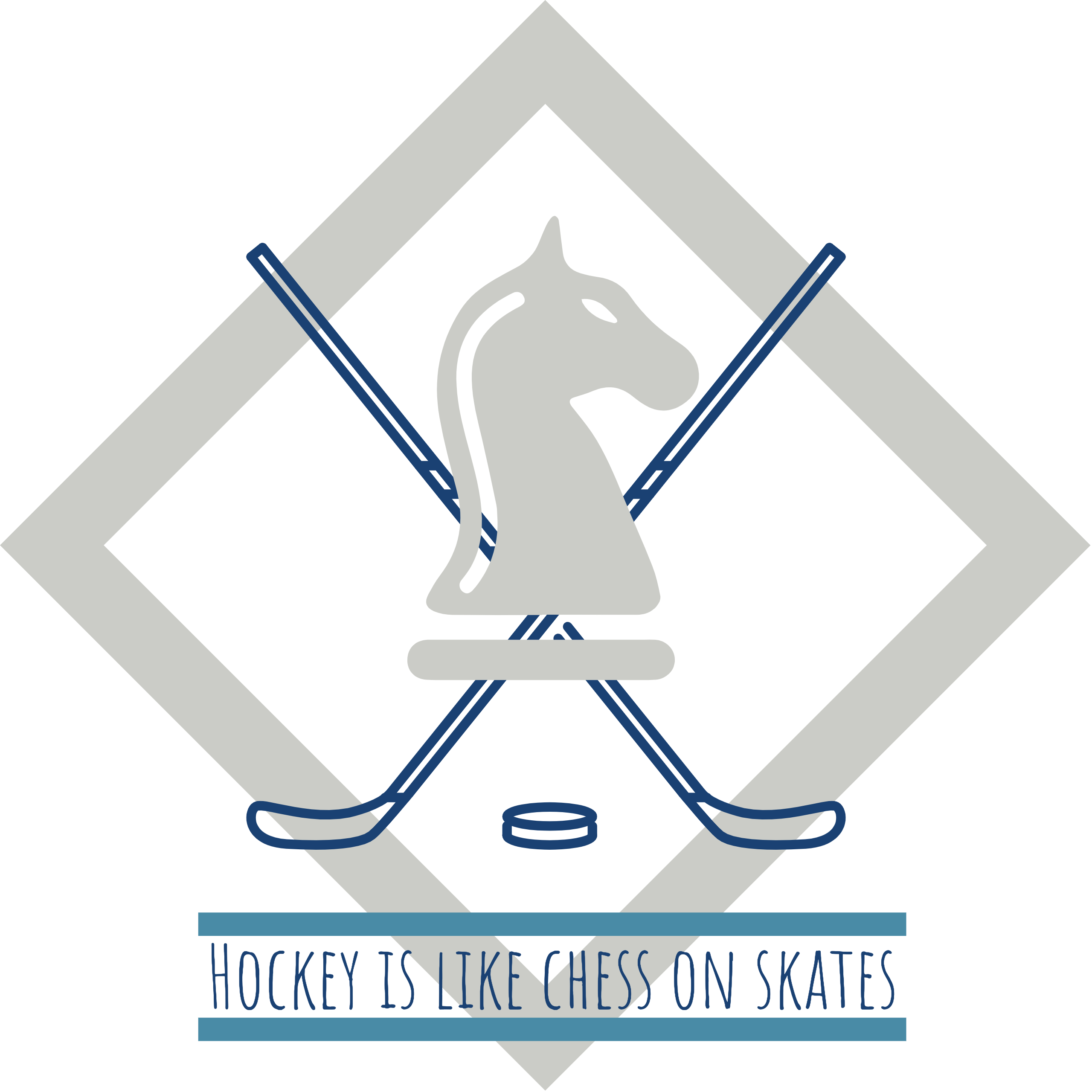“When was the last time a team won the Stanley Cup without a great goalie? Not in my lifetime.”
DEFENSIVE ZONE – GOALTENDING – 9 TIPS
1. Know Where You Are In The Net
It is important for a goaltender to know where he is in the net. This means knowing your angles and checking how far you are away from the goalposts with your stick. You need to square up to the puck, not the player, so you don’t give them more of the net on either side.
There are a few things you can do to get set in the angle that you want. There are seven main points on the ice that you can use to get lined up with:
- Where the goal line meets the boards in our end on the left
- The face off dot in our end on the left
- Where the blue line meets the boards in our end on the left
- Centre ice
- Where the blue line meets the boards in our end on the right
- The face off dot in our end on the right
- Where the goal line meets the boards in our end on the right
There are many other points on the ice that you can use, such as the hash marks. Another point you can use for face offs is the little corner pieces inside the crease.
2. Challenge The Shooter
Get off the blue ice in the crease and onto the white ice. The more you challenge the less of the net the shooter sees, the bigger you appear and the more likely he is to miss the net.
3. Anticipate Puck Control Loss In Our Zone
Even if we have the puck in our zone, be in the position you want to be assuming we will immediately lose the puck and do that until we are out of our zone. Don’t get caught sleeping, relaxed, way in on the blue ice and have them steal the puck from us and not be out challenging and ready.
4. Understand their Play
It is helpful for goalies to know as much about offensive options 2 on 1’s, 3 on 2’s, 3 on 3’s, 4 on 3’s etc plays so you have a good idea where the eventual shot is likely to come from.
5. Breakaways
Challenging is especially true on breakaways. Remember 5 things on breakaways:
- Get your angle on the puck
- Challenge onto the white ice
- Retreat at the same speed as the shooter
- Stall
- Make the save
The stall is when you have stopped skating and you are just gliding backwards waiting for the player to make his move. Always make their player make the first move, don’t commit early. Make it hard on him and don’t go down into the butterfly or way back on the blue ice. He can shoot or stickhandle. If the puck is out in front of his body, he can’t shoot, he’s probably going to stickhandle. If he pulls the puck back and turns his body he’s probably going to shoot, but if he’s really good he could do that first and then bring the puck back in front of him and stickhandle. Usually on a deke the shooter ends up on his backhand
6. Your Stick
It is important to keep your stick flat on the ice when in a crouched position so the 5 hole between your skates is blocked.
If they shoot the puck in around the net, practice anticipating this and then going quickly behind the net to stop the puck for your defenceman coming back hard probably under forechecking pressure.
Practice handling the puck on your own behind our net passing it up to our forwards on either side so you don’t become predictable always going to one side.
Use your stick to poke check the puck if the puck handler is coming across the top of the crease looking to open you up and then shoot.
7. Rebounds
Deflecting pucks to the corner or causing shots to drop down in front of you for you to cover quickly are key to preventing goals, many of which are so called shot-rebound goals.
8. Prevent Screening
It is important to not only see around the attempted screen but to get your defencemen to clear the way in front of you so you can see the shot coming. Also, if the screen is just off the very top of the blue ice, this will cause you to stand further in the blue ice and expose more available net because your angle is not as good as you want it to be.
9. Communication
Goalies face the play and the puck all the time, and so are in the perfect position to talk to our forwards and defencemen about whether they have time and space to skate with the puck, how many forecheckers are coming at them, who is open in front of our net, and so on. So, talk.
Thanks to Andrew Lounsbury
